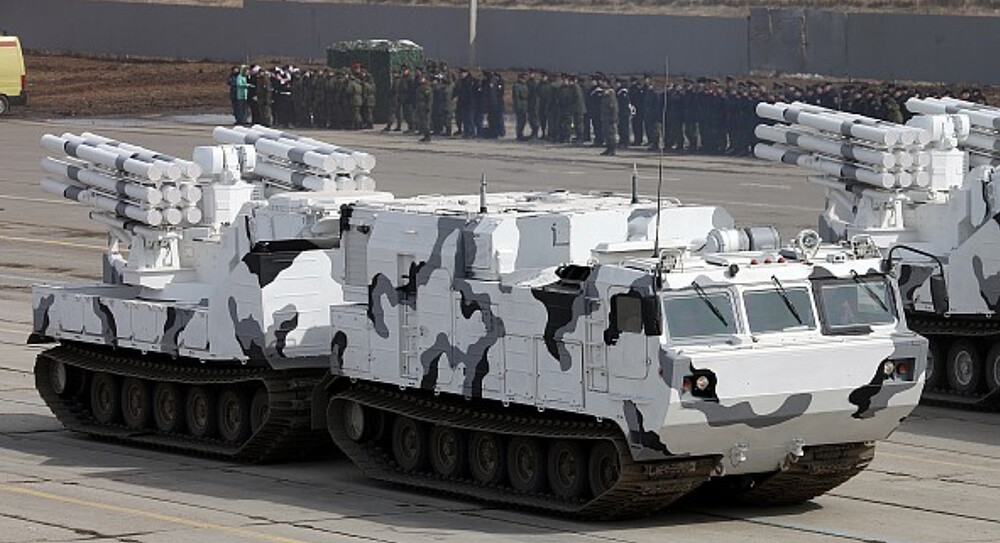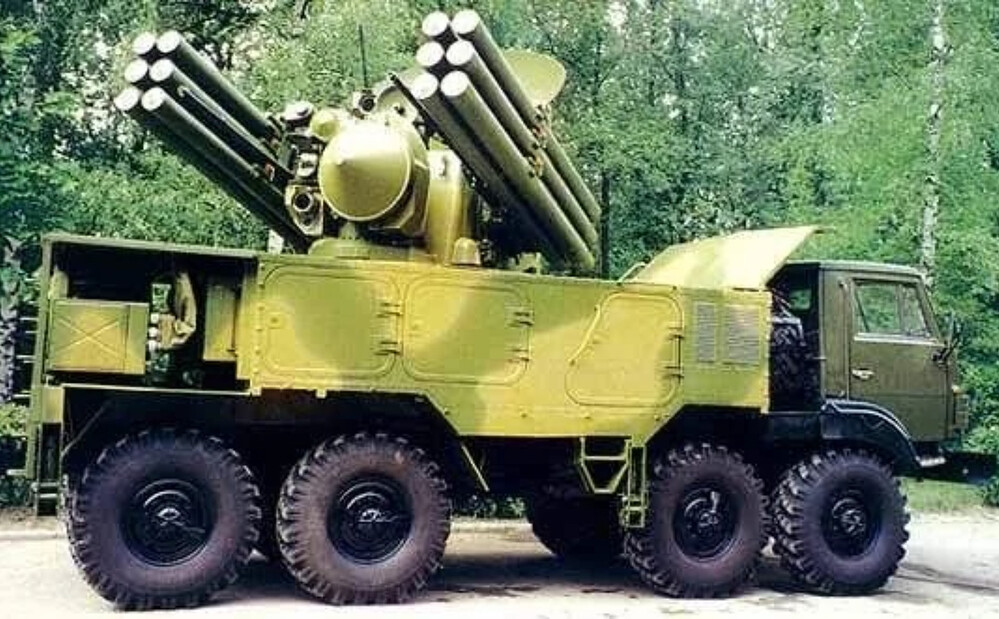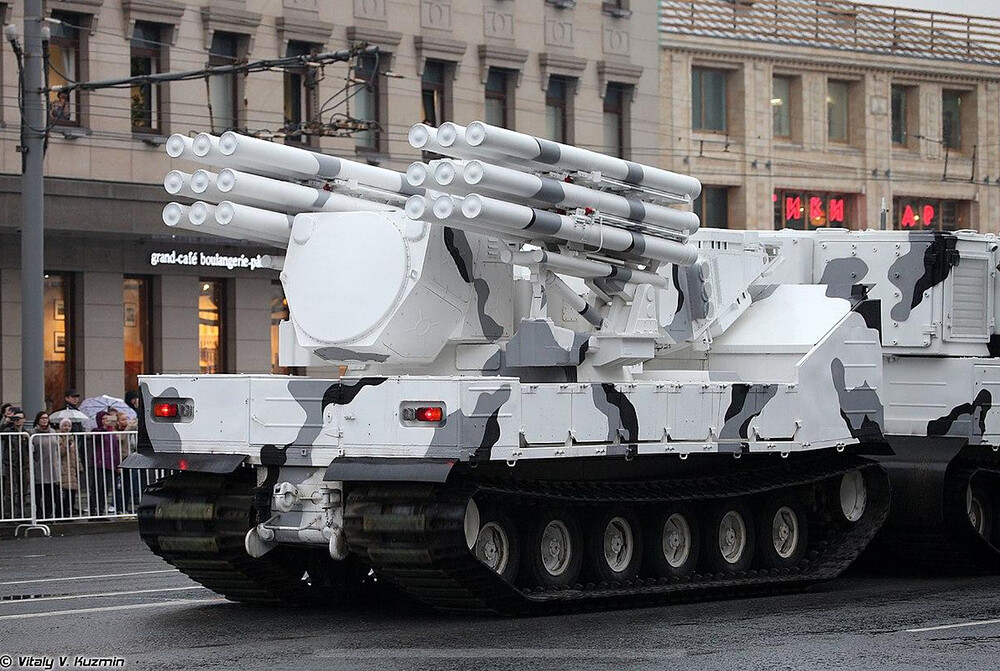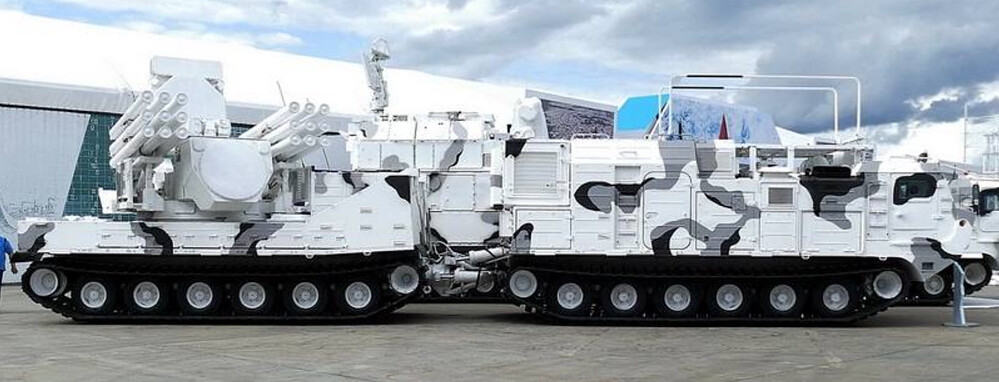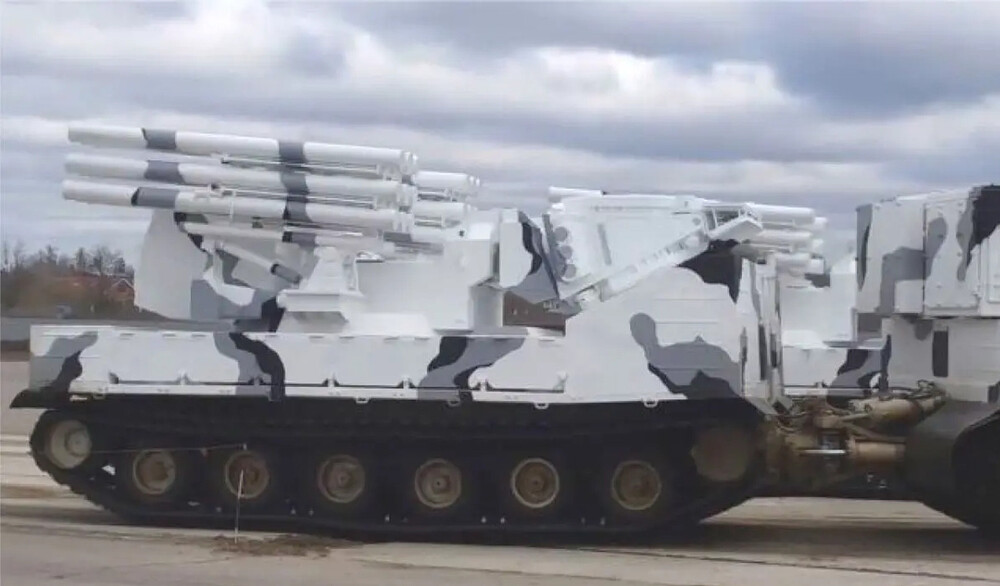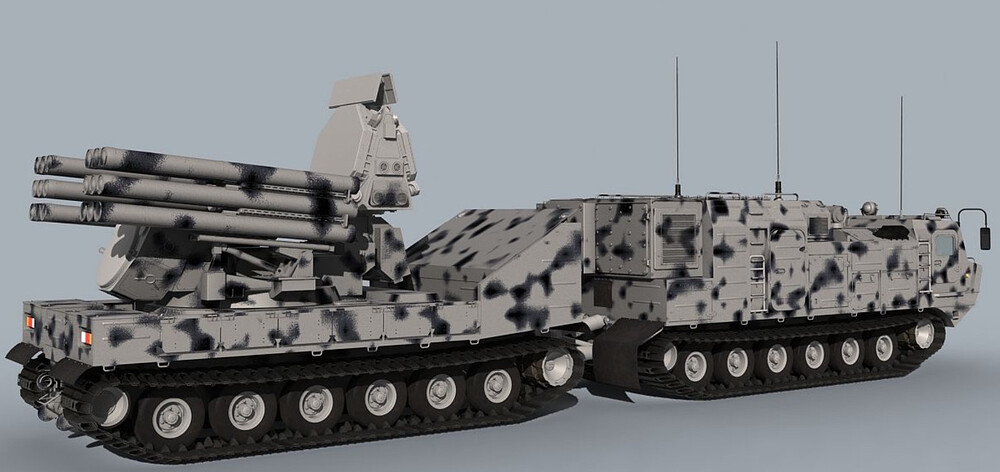Would you like to see Pantsir-SA in-game?
Pantsir-SA – Arctic Air Defense System
The
Pantsir-SA is a specialized version of Russia’s Pantsir short-range air defense system, designed alongside the
Tor-M2DT specifically for operations in the harsh Arctic environment. It was developed to overcome the limitations of the standard wheeled Pantsir-S1, which struggled in deep snow and extreme environments. Introduced publicly in 2017, the Pantsir-SA has since been fielded with Russian Arctic military units, providing them with mobile air defense capability in some of the world’s most challenging terrain.
History
Spoiler
The Pantsir air defense system originated during the late Soviet period, when military planners recognized the need for a mobile platform that could protect critical assets like long-range missile sites from low-flying aircraft and precision-guided threats. This concept evolved from earlier systems such as the Tunguska, but with the collapse of the USSR, development stalled until Russia revived the project in the 1990s. The result was the Pantsir-S1, a self-propelled system combining short-range surface-to-air missiles and rapid-fire 30 mm cannons on a wheeled truck, offering flexible and rapid point defense for strategic facilities and mobile units alike.
Officially entering service in the mid-2000s, Pantsir quickly became popular and has been used operationally in Syria, Libya and other conflict zones, where lessons learned drove further refinements. Over time, Russia developed upgraded versions with better radar, longer-range missiles, and enhanced automation to counter modern challenges like drone swarms and saturation attacks. Specialized offshoots include our Pantsir-SA, adapted for harsh Arctic environments and additional missiles, and the Pantsir-M, designed for shipboard use among other modernizations and modifications.
Weapon Station
Spoiler
Unlike the standard Pantsir-S1, which combines surface-to-air missiles and twin 30 mm autocannons, the Pantsir-SA variant was modified to operate without its cannon armament. Engineers removed the twin 30 mm guns entirely, focusing the system on missile engagements only. This change eliminates issues related to cannon operation in freezing conditions. Instead of the cannons Pantsir-SA carries a larger missile load compared to the original version: 18 ready-to-launch missiles, mounted in two banks of nine on either side of the turret. The core radar and electro-optical fire control system are based on more modern Pantsir versions, allowing the system to detect, track, and engage aerial threats with precision in Arctic conditions. The radar can rotate for 360-degree coverage and folds down during transport to clear obstacles and reduce the vehicle’s silhouette.
With the cannons removed, the Pantsir-SA relies entirely on its surface-to-air missiles for protection against threats such as aircraft, helicopters, UAVs, and cruise missiles. It can use the 57E6-series missile as the Pantsir-S1, a two-stage, solid-fuel missile guided by radio commands. These missiles reach speeds exceeding Mach 2 and can hit targets up to about 20 kilometers away, at altitudes of up to 15 kilometers. The system can engage multiple targets at once, and coordinate with other Pantsir units for broader airspace defense. One trade-off is that without the cannons, the system loses its close-in defense against very short-range targets, but this compromise is considered acceptable for its specialized Arctic mission.
Vehicle Platform: DT-30PM “Vityaz”
Spoiler
The Pantsir-SA is mounted on the DT-30PM “Vityaz”, an articulated, twin-unit tracked vehicle built for extreme Arctic terrain. The DT-30PM consists of two large tracked sections connected by a flexible joint, which gives it excellent maneuverability over snow, ice, and swampy ground that would immobilize trucks. The front unit houses the engine, crew cabin, and control systems, while the rear unit supports the Pantsir turret and its radar and missiles. This setup spreads the vehicle’s weight across a wide surface area, resulting in low ground pressure and excellent flotation on soft snow.
Key features of the DT-30PM include:
- Power: A 12-cylinder diesel engine producing about 800 horsepower.
- Speed and Range: It can travel at speeds up to 45 km/h on firm ground, with an operational range of roughly 700 kilometers on a full tank.
- Mobility: Capable of crossing trenches over 4 meters wide, climbing steep slopes up to 30 degrees, and negotiating vertical obstacles over 1 meter high. It can also swim across rivers and lakes, moving slowly in water using its tracks for propulsion.
- Crew Comfort: The cabin is heated and insulated to ensure the crew can operate in temperatures well below freezing, even down to minus 50 degrees Celsius.
- Camouflage and Arctic Fit: Typically painted in Arctic white (could come in basic green camouflage) and equipped with systems to maintain engine and equipment performance in severe cold.
Operational Role
Spoiler
The Pantsir-SA is a specialized Arctic variant of the Pantsir air defense family, purpose-built to protect Russian bases, airfields, and remote outposts across the High North. Unlike the standard version, it forgoes the twin 30 mm cannons in favor of an expanded missile load, relying entirely on guided surface-to-air missiles to engage aerial threats at various altitudes and ranges. Mounted on the highly mobile DT-30PM articulated tracked vehicle, the Pantsir-SA can traverse deep snow, ice, and rugged tundra, maintaining reliable air defense coverage in some of the most inhospitable and roadless regions on Earth. Working alongside other Arctic-adapted systems like the Tor-M2DT, it forms part of a layered network that supports Russia’s broader strategy to secure its northern territories and safeguard critical infrastructure in extreme climates.
Pantsir‑SA — Full Specifications
Spoiler
General
| Feature |
Detail |
| Type |
Short-range self-propelled surface-to-air missile system (Arctic variant) |
| Primary Role |
Point air defense for Arctic military installations and mobile units |
| Developer |
KBP Instrument Design Bureau |
| Operator |
Russian Armed Forces (Northern Fleet and Arctic brigades) |
| Entered Service |
Around 2016–2017 |
| Combat Weight |
≤ 55 tons (vehicle plus combat module and missiles) |
Armament
| Main Weapon | 18 × 57E6 series surface-to-air missiles (9 tubes per side) |
| Cannons | None (guns removed for Arctic version) |
| Engagement Range | Minimum: ~1.2 km; Maximum: up to 30 km |
| Engagement Altitude | ~15 meters minimum to 18 km maximum |
| Missile Speed | Up to Mach 2–3 (approx. 1,000 m/s) |
| Warhead | High-explosive fragmentation |
| Guidance | Command-guided via radar and electro-optical tracking |
Sensors and Fire Control
| Search Radar | Phased-array X-/S-band; 360° azimuth |
| Detection Range | Up to 36 km (fighter-size target) |
| Tracking System | Radar plus electro-optical/infrared targeting suite |
| Control | Fully automated engagement; operator override possible |
| Targets Tracked/Engaged | Tracks multiple targets; can guide multiple missiles simultaneously |
Chassis: DT‑30PM “Vityaz”
| Chassis Type | Two-unit articulated tracked vehicle, Arctic-adapted |
| Engine | YaMZ-847.10 diesel, 12-cylinder, ~800 hp |
| Max Road Speed | 40 km/h |
| Typical Off-road Speed | ~20 km/h (varies with terrain and snow conditions) |
| Operational Range | ~700 km on fuel |
| Mobility | Climbs slopes up to 30°, crosses 4.5 m trenches, swims at low speed (~3–5 km/h) |
| Arctic Features | Insulated heated crew cabin, cold-start systems, white camouflage |
Crew
| Minimum Crew | 3 people (driver, commander, operator) |
| Cabin | Heated, pressurized for Arctic conditions |
Video
Sources
Spoiler
Russia's Arctic Troops Are Getting These Specialized Mobile Air Defenses
Pantsir-SA
Pantsir-SA | Weaponsystems.net
